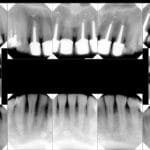Have you ever spotted those small bumps on the edges of newly erupted adult teeth? These are called mamelons, and they’re a perfectly normal part of dental development. This comprehensive guide covers everything you need to know about mamelons—from their causes and development to cosmetic options and when to consult a dentist.
What Are Mamelons?
Mamelons are small, rounded bumps found on the incisal edge (biting surface) of newly emerged permanent incisors, the front teeth you use for biting. They often appear in sets of three, giving the teeth a slightly scalloped or serrated look. These bumps are composed of enamel, the hard, outer layer of your teeth. Although they are most commonly seen on the permanent incisors, they can sometimes appear on baby teeth as well.
Why Do Teeth Have Mamelons?
Mamelons form during tooth development as the different lobes of enamel that make up each tooth fuse together. Think of it like puzzle pieces coming together to create the complete tooth structure. The mamelons are simply the visible remnants of these junctions. While researchers haven’t pinpointed a definitive function for mamelons, one theory suggests they may help the tooth erupt through the gums. However, more research is needed to confirm this theory.
The Natural Progression of Mamelons
In most cases, mamelons naturally wear away over time through the everyday act of chewing. Each bite you take gently abrades the enamel, gradually smoothing out those bumps. This process typically occurs throughout childhood and adolescence. By adulthood, often by age 25, mamelons usually disappear completely or become barely noticeable. For most individuals, genetics plays a role in the size and prominence of mamelons. Just as we inherit different hair or eye color, some people naturally have more pronounced mamelons than others.
Mamelons and Bite Alignment
Sometimes, the way your upper and lower teeth fit together, known as your “bite” or occlusion, can influence the wear of mamelons. An anterior open bite, where the upper and lower front teeth don’t overlap properly, can prevent the mamelons from wearing down evenly. This is because the teeth don’t make consistent contact during chewing, hindering the natural abrasion process. In these cases, the mamelons may persist into adulthood.
When to Seek a Dentist’s Opinion
While mamelons are typically harmless and don’t require treatment, it’s always a good idea to consult with a dentist if you have any concerns. They can examine your teeth, assess your individual situation, and provide personalized advice. You should especially consider consulting a dentist if:
- Mamelons persist into adulthood: If your mamelons are still noticeable as an adult, your dentist can evaluate your bite and discuss cosmetic options, if desired.
- Aesthetic concerns: If you feel self-conscious about the appearance of your mamelons, your dentist can offer solutions to smooth them out.
- Discomfort: Although rare, prominent mamelons might cause minor speech difficulties or irritation.
Cosmetic Contouring for Mamelons
If you’re bothered by the look of your mamelons, a simple cosmetic procedure called enameloplasty or odontoplasty can smooth them out. During this procedure, the dentist gently reshapes the tooth enamel using fine dental instruments or a laser, creating a more uniform and symmetrical appearance. It’s a quick, relatively painless procedure that can significantly enhance your smile. Some dentists even use laser dentistry, which offers greater precision.
Mamelons on Baby Teeth
Mamelons can also occur on baby teeth, although they are less common than on permanent teeth. Similar to permanent teeth, they tend to wear down naturally as a child learns to chew and speak. They’ll likely disappear by the time a child reaches ages 3-4. If you notice mamelons on your child’s baby teeth, there’s generally no reason for concern.
Conclusion
Mamelons are a natural part of tooth development, particularly on newly erupted permanent teeth. While they usually wear down over time, several factors, including bite alignment and genetics, can influence their persistence. If you have any questions or concerns about your mamelons, or if you’re interested in exploring cosmetic options, don’t hesitate to consult with your dentist. They can offer personalized advice and solutions to help you achieve the smile you desire. Remember, a healthy smile is a beautiful smile.
Have you ever wondered about the perplexing condition known as onychauxis?
- China II Review: Delicious Food & Speedy Service - April 17, 2025
- Understand Virginia’s Flag: History & Debate - April 17, 2025
- Explore Long Island’s Map: Unique Regions & Insights - April 17, 2025
















